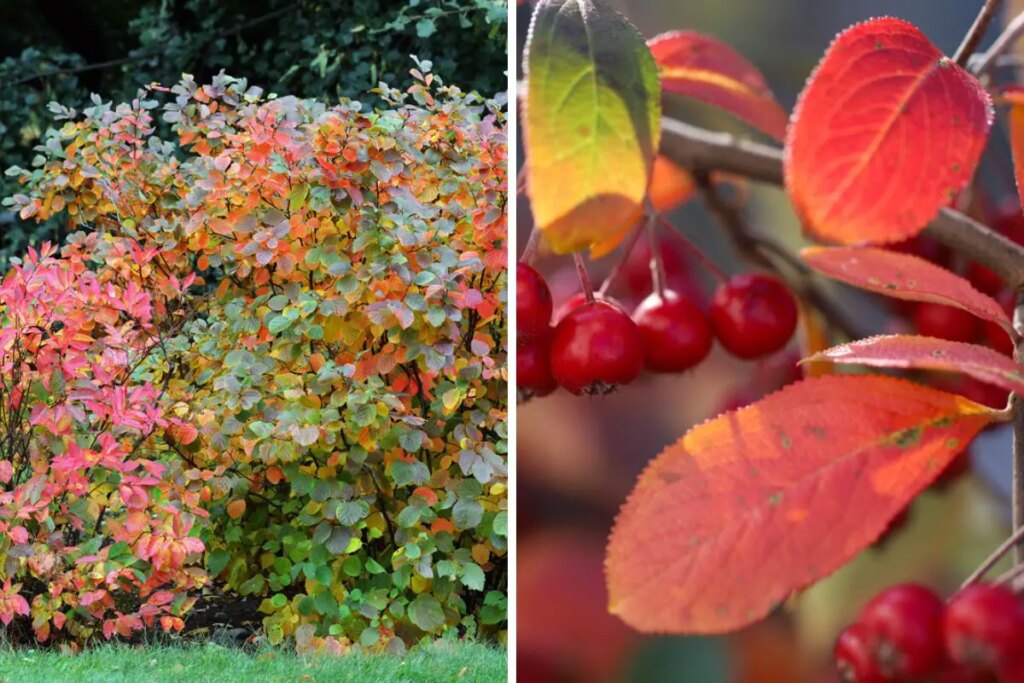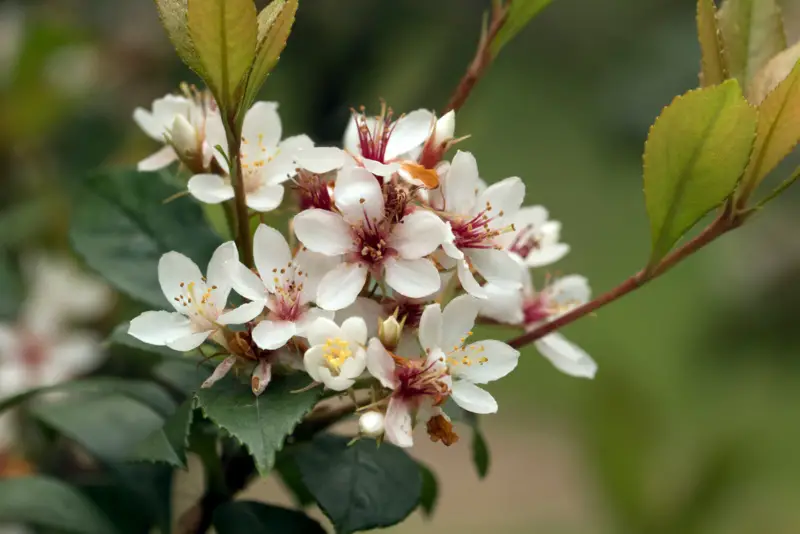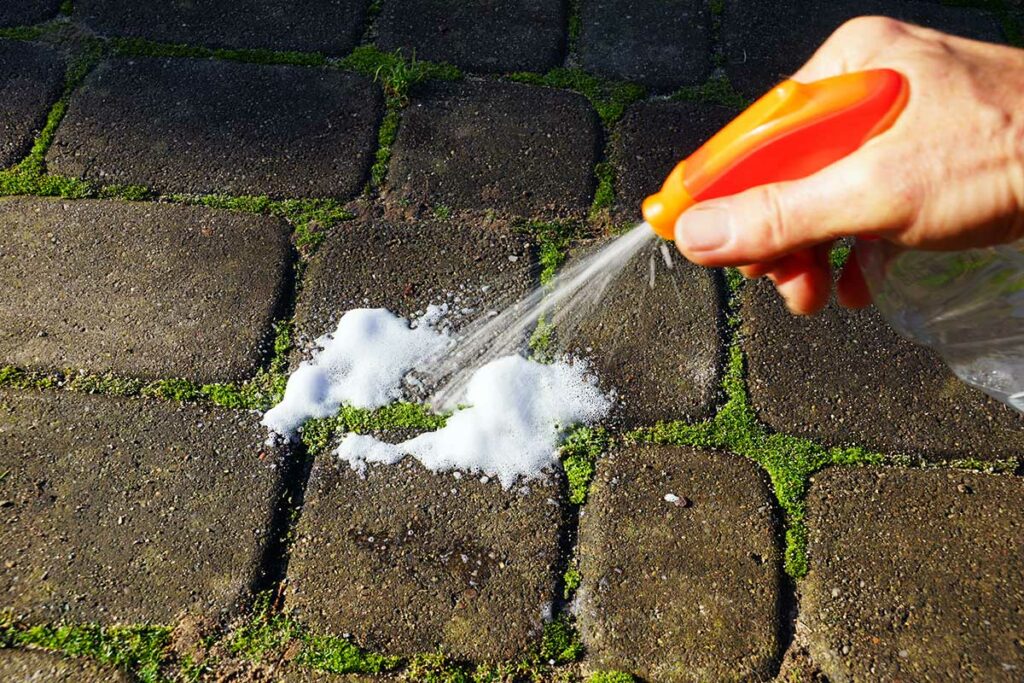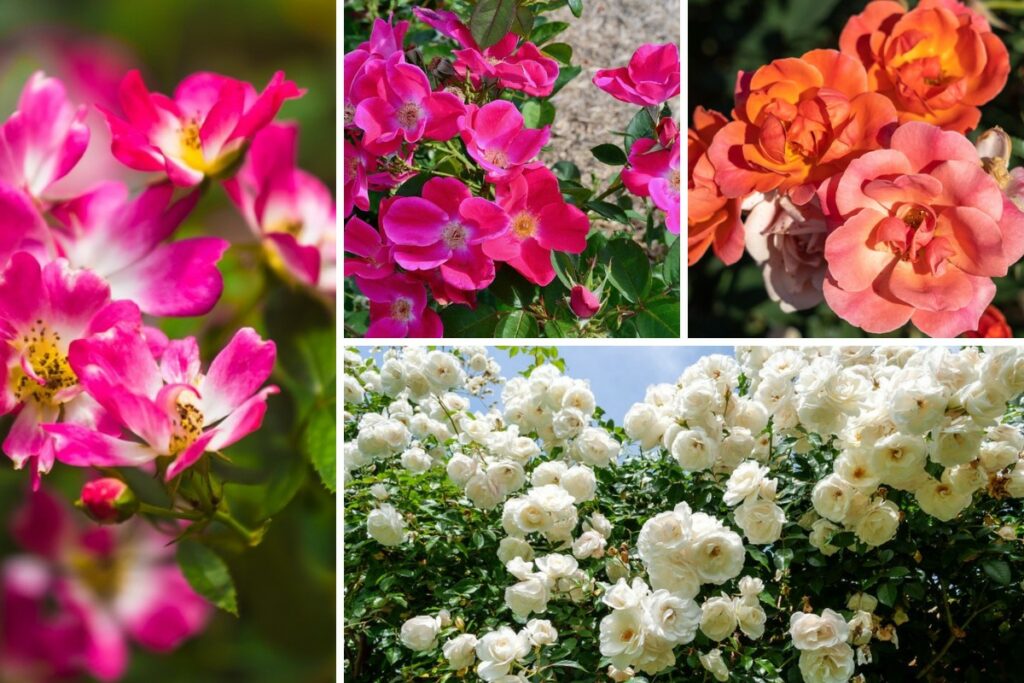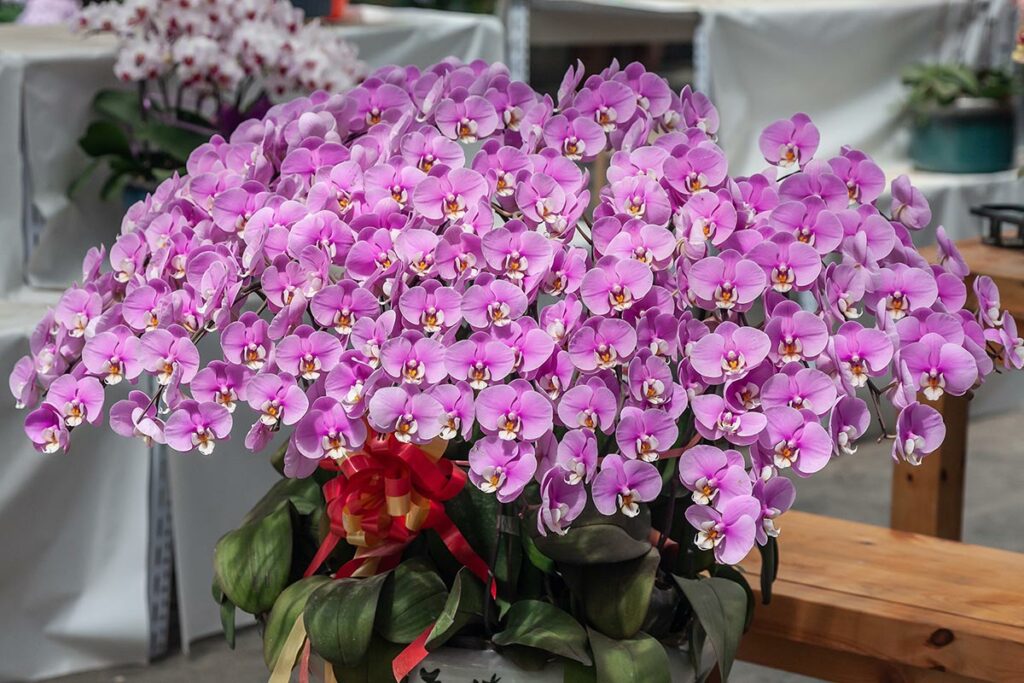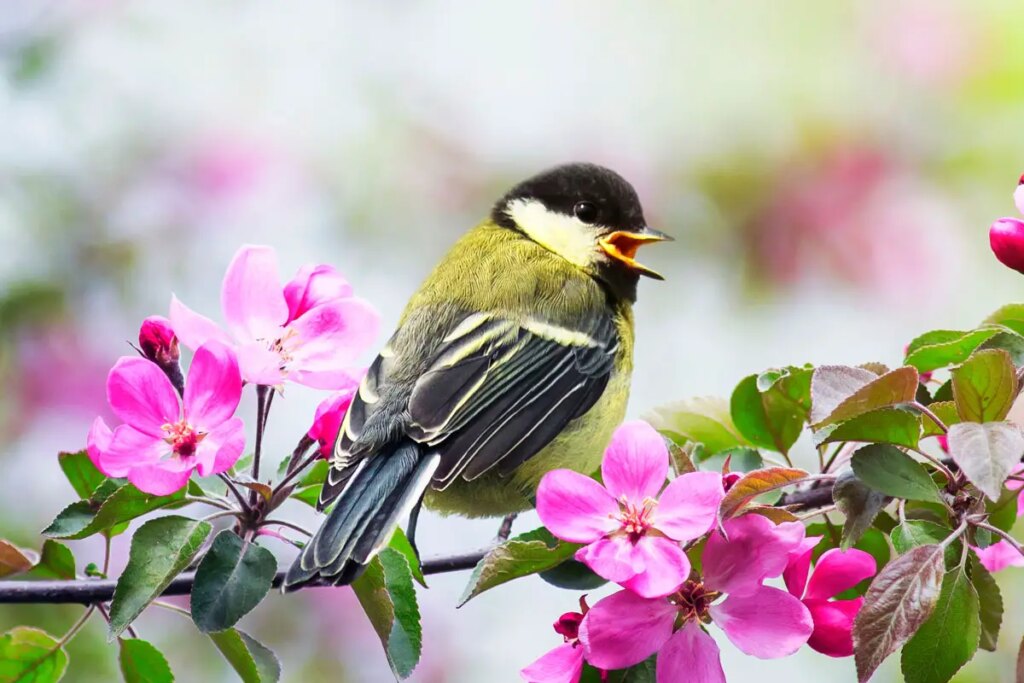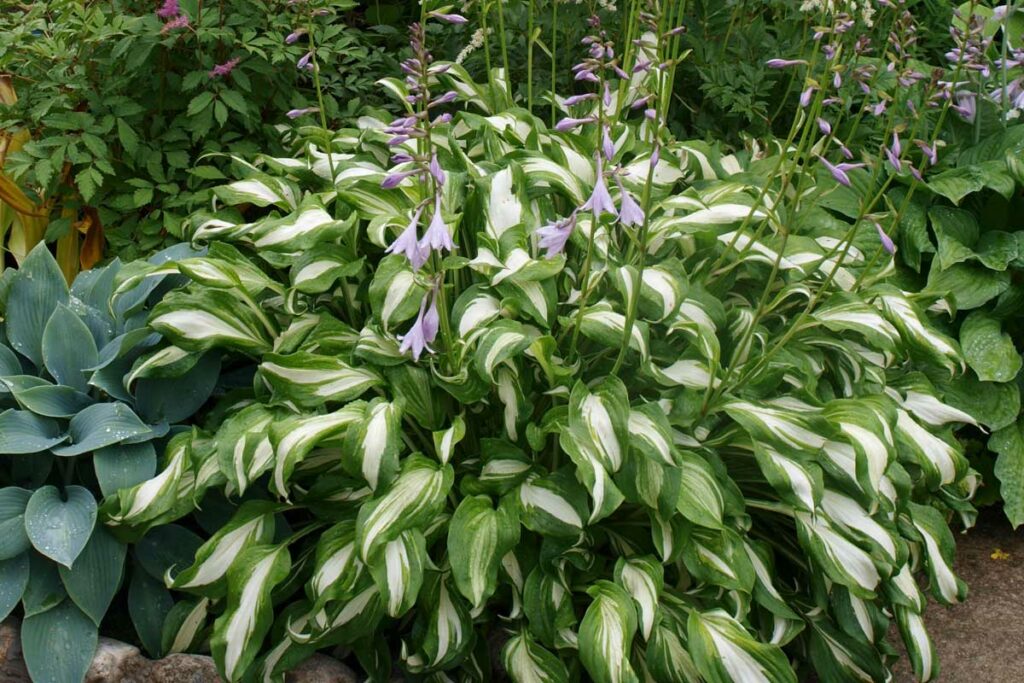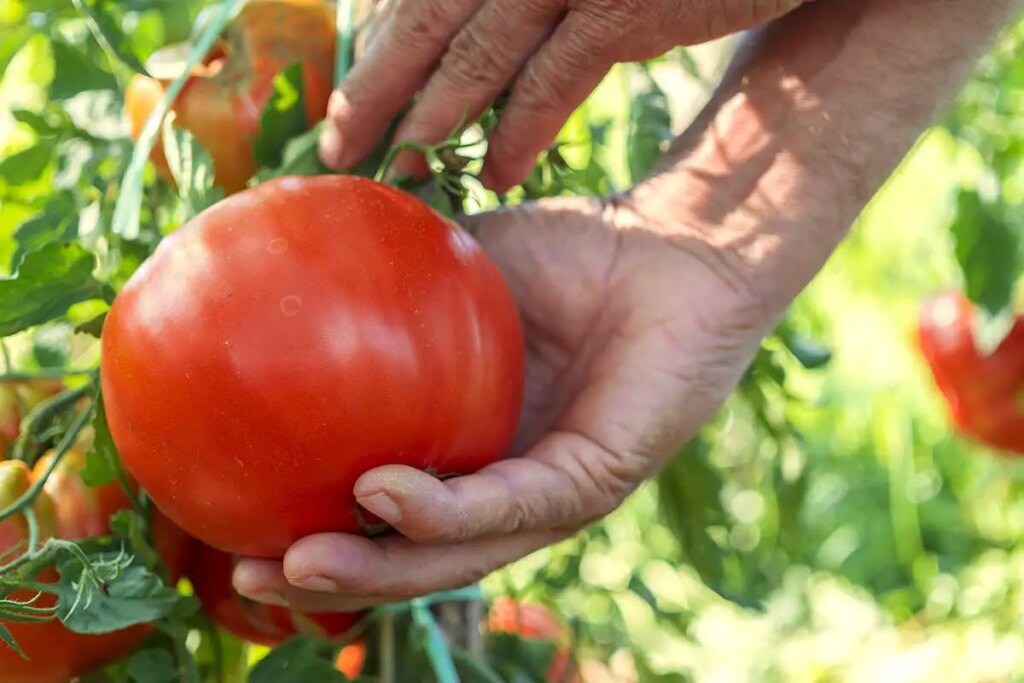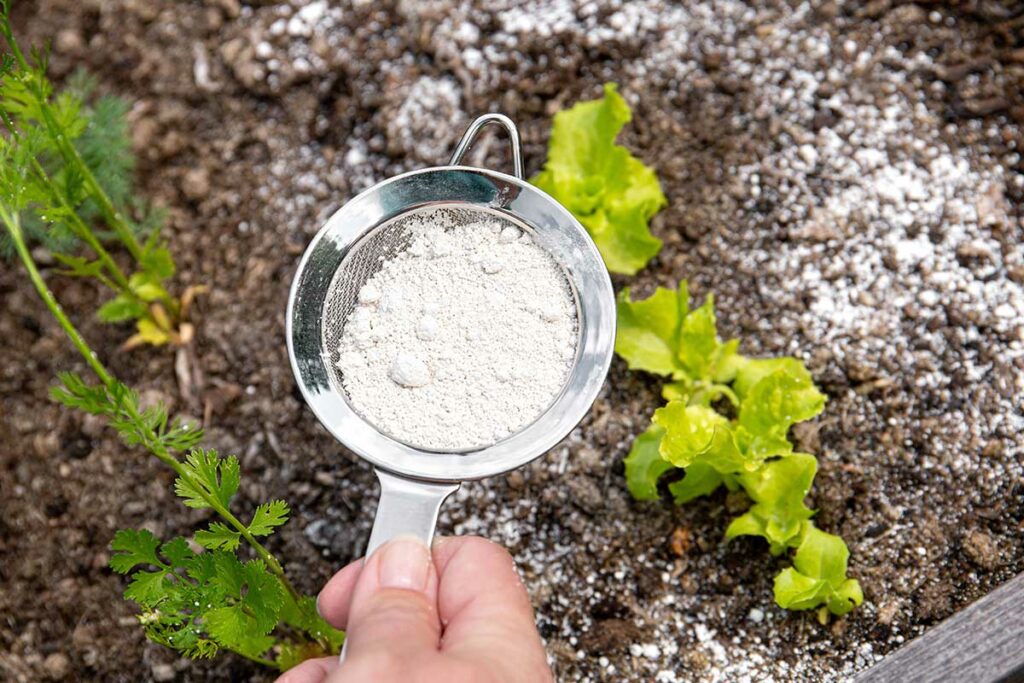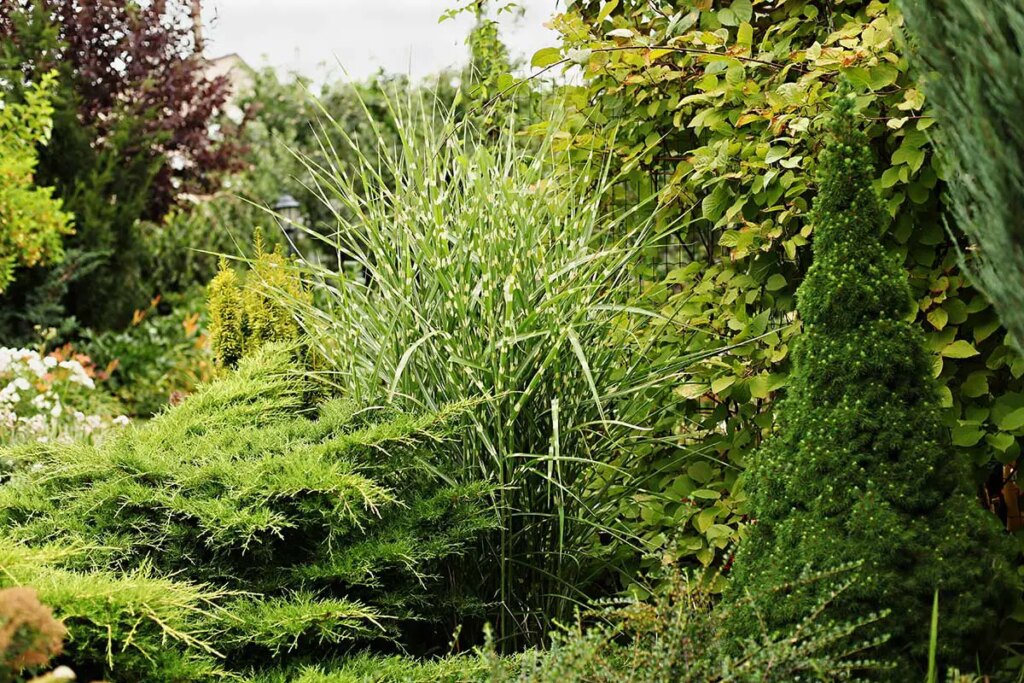
Gardening can be a rewarding hobby, offering you a sense of accomplishment and a way to enjoy the great outdoors. One aspect every gardener should consider is the choice of plants to grow in their garden, as certain plants can be invasive or harmful to other plants, animals, or even humans.
While some plants might be attractive or interesting, they can also create long-term issues for your garden’s ecosystem.
As you plan your garden, it’s essential to know which plants to avoid and why they may cause problems. This knowledge will not only help you make informed decisions but will also lead to a healthier, happier gardening experience.
The following list will provide you with valuable insight into which plants you should steer clear of and why.
By being aware of these plants and their potential pitfalls, you’ll be able to create a beautiful and thriving garden that benefits both you and your local environment.
Let’s dive in and explore the top 10 plants you should never grow in your garden.
Plants to Avoid
It’s always exciting to add new plants to your garden, but there are a few that experts recommend avoiding. In this section, we will discuss some of these plants and why you should steer clear of them.
The first plant to avoid is kudzu. This fast-growing vine may look attractive, but it can quickly become a nightmare for you and your garden. Kudzu can grow up to a foot a day, smothering other plants and even damaging structures.
Another plant to watch out for is bamboo. While there are some beautiful and well-behaved varieties, others can spread aggressively through their root system, making them invasive. If you must plant bamboo, be sure to choose a clumping variety and plant it inside a containment barrier, so it doesn’t take over your garden.
- Mint can also be a problem in the garden. It has a tendency to spread rapidly and is difficult to eradicate. If you love the scent and taste of mint, consider planting it in containers to keep it under control.
- A plant that often surprises people to see on this list is the morning glory. While its flowers are lovely, its seeds can be toxic, especially to children and pets. Morning glory also has a tendency to self-seed and spread throughout the garden.
- Purple loosestrife might be another one you’ll want to pass on. It’s regarded as an invasive species in many regions, as it can push out native plants and reduce biodiversity. Instead, choose native plants that have a similar look and won’t cause harm to your local ecosystem.
These are just a few examples of the plants you should avoid in your garden. Remember, before introducing a new plant to your garden, always do a bit of research to make sure it won’t harm your other plants or the environment.
Chinese Bamboo
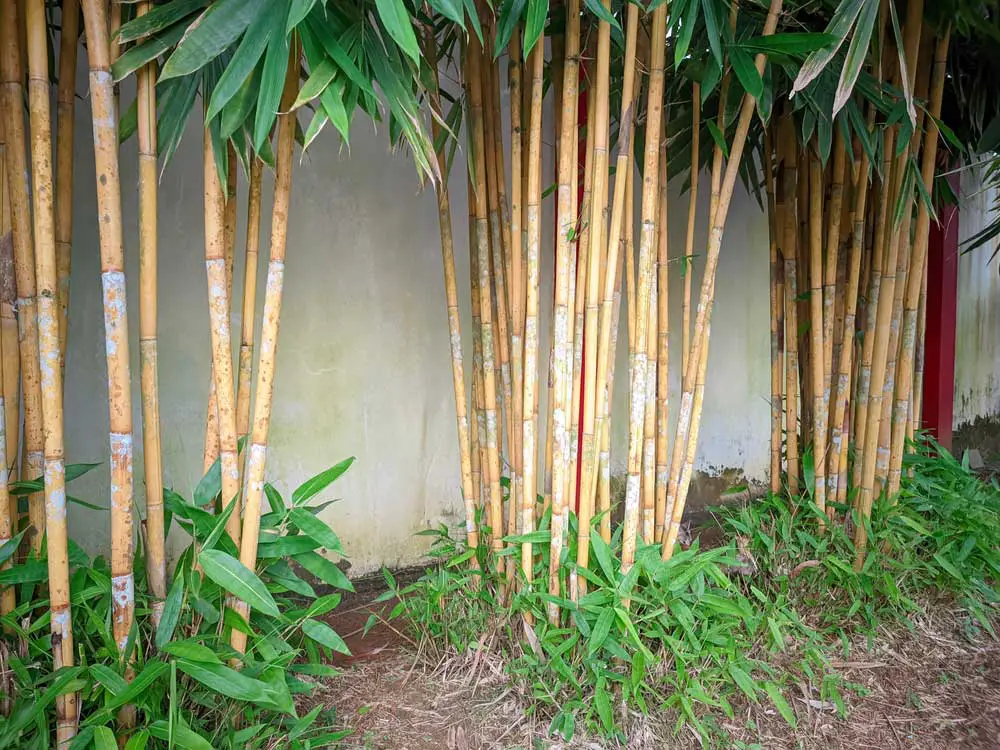
Rapid Spread
Chinese bamboo, also known as running bamboo, is a popular ornamental plant in many gardens. However, experts recommend avoiding it due to its aggressive spreading habit. This plant can quickly take over your garden as it sends out underground shoots called rhizomes. These new shoots grow so fast that they can cover significant distance in just a few weeks, invading surrounding areas and pushing out other plants.
You might think having a natural privacy screen is nice, but the rapid spread can actually harm your garden’s ecosystem. Compounding the issue is the speculation that some species of Chinese bamboo may also release chemicals that stall the growth of other plants nearby.
Difficult Removal
The same fast-growing and invasive nature that is a concern in the garden also makes Chinese bamboo difficult to remove. Its extensive rhizome network means that even after cutting down the stalks, the plant can quickly regrow from these underground structures.
To effectively remove Chinese bamboo, you would need to dig out the entire root system. This can be a labor-intensive process, and in some cases, you may need to resort to using herbicides to ensure the plant doesn’t return.
In conclusion, while Chinese bamboo may look attractive, it’s important to consider the potential consequences before introducing it into your garden. Instead, opt for other plants and grasses that can provide similar benefits without causing such serious drawbacks.
Kudzu Vine
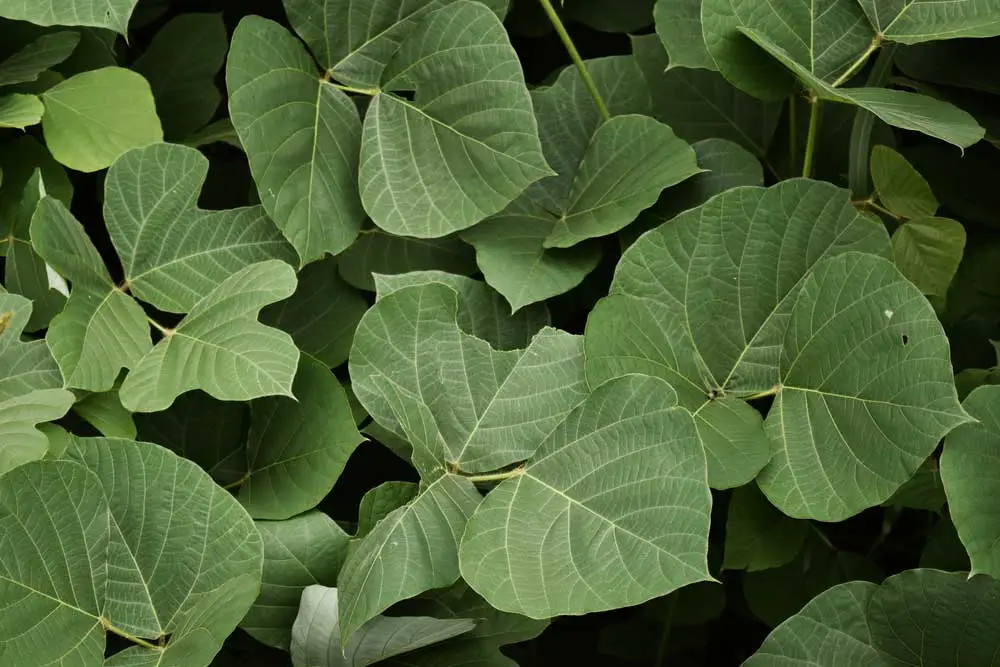
Invasive Nature
Kudzu Vine is a fast-growing and aggressive plant, known for smothering and outcompeting native species. By planting Kudzu Vine in your garden, you run the risk of it spreading uncontrollably and harming the local ecosystem. This is because its rapid growth enables it to quickly cover and block sunlight from reaching other plants, eventually starving them of necessary nutrients.
Remember, your garden isn’t a closed environment: Kudzu Vine can easily spread beyond your property, causing damage to nearby wild habitats. In many places around the United States, Kudzu is classified as an invasive species and its cultivation is discouraged or even prohibited.
Property Damage
Not only does Kudzu Vine pose a threat to the environment, but it can also cause significant damage to your property. As its tendrils extend and climb, they can penetrate and weaken structures like fences, walls, and even the foundations of your home. Eventually, this may lead to costly repair work or a potentially unsafe living environment.
Additionally, the presence of Kudzu Vine can decrease your property’s value, as it can be difficult and time-consuming to remove from your landscape. So, when planning your garden, consider opting for alternatives that are more environmentally friendly and less likely to cause damage to your property.
Water Hyacinth
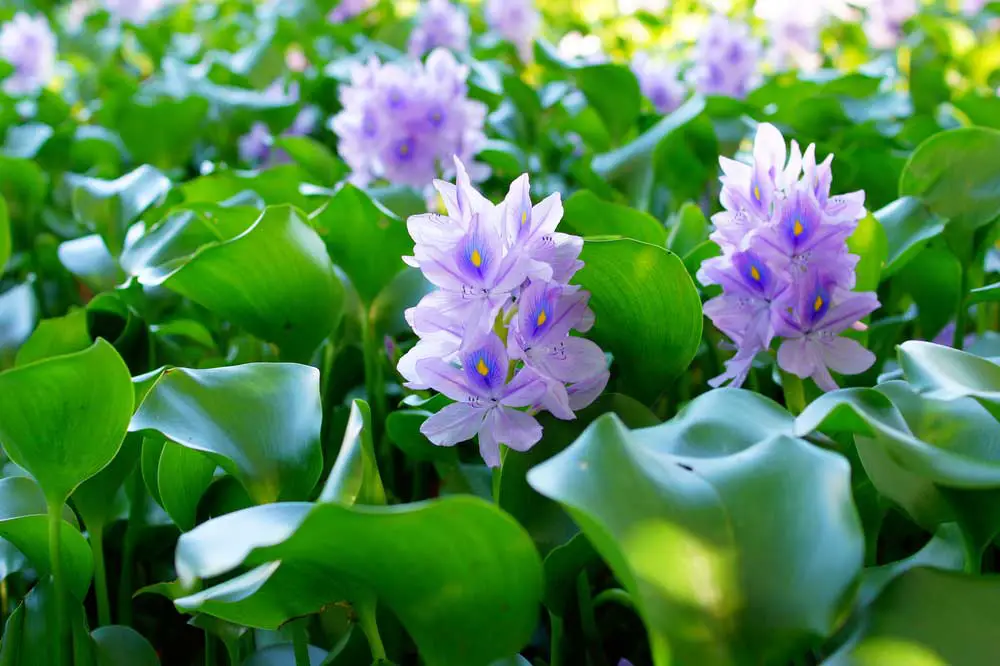
Multiply Quickly
Water hyacinth is a beautiful aquatic plant with its floating leaves and lavender flowers. However, you might want to think twice before adding it to your garden. This plant grows incredibly fast and can double its mass in just a few weeks!
It’s hard to control the growth of water hyacinth, no matter how diligent you are in pruning it. This rapid proliferation can quickly overwhelm your pond or other water features, making it difficult to maintain a balanced ecosystem.
Threat to Water Bodies
The invasive nature of the water hyacinth can also pose a significant threat to local water bodies. If any part of the plant makes its way into nearby rivers, lakes, or ponds, it can spread like wildfire and choke the native aquatic plants and animal life.
Moreover, large water hyacinth infestations can deplete the oxygen levels in a water body, which can result in fish kills and detrimental impacts on other aquatic species. Besides, this plant has the potential to clog irrigation systems and disrupt recreational activities, such as boating and fishing.
So, while the water hyacinth may seem like a lovely addition to your garden, it’s best to avoid planting it to minimize the risks it poses to the environment and your local ecosystem. Keep your garden thriving with other, less invasive aquatic plants instead!
English Ivy
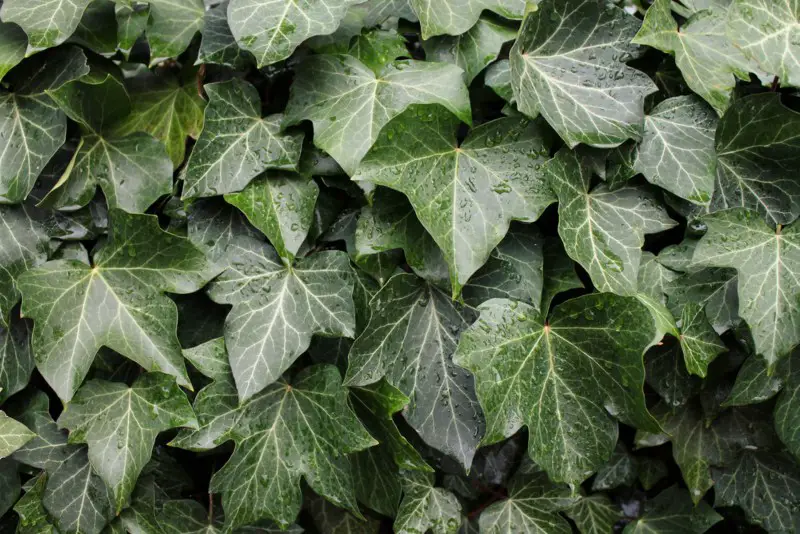
Tricky to Control
English Ivy (Hedera helix) might seem like a harmless, attractive plant to include in your garden, but it’s important to know that it can quickly become a problem. The fast-growing nature of this vine makes it hard to control, and it can easily overtake other plants and trees in your garden.
Furthermore, it’s an invasive species in many parts of the world, meaning that it can out-compete native plants for resources such as water and sunlight. If you want to maintain a balanced and diverse ecosystem in your garden, it’s wise to avoid planting English Ivy.
Ruin to Structures
Besides the ecological concerns, there’s another reason why experts recommend that you never grow English Ivy in your garden: it can cause significant damage to structures. The aerial roots of this plant can easily penetrate cracks and crevices in walls, fences, and tree trunks, eventually expanding and wreaking havoc on them. Over time, this damage can lead to costly repairs.
In summary, while English Ivy may look charming and elegant, it poses a risk to the health of your garden and any nearby structures. To protect your garden and maintain a balanced ecosystem, it’s best to opt for other, less invasive plants.
Purple Loosestrife
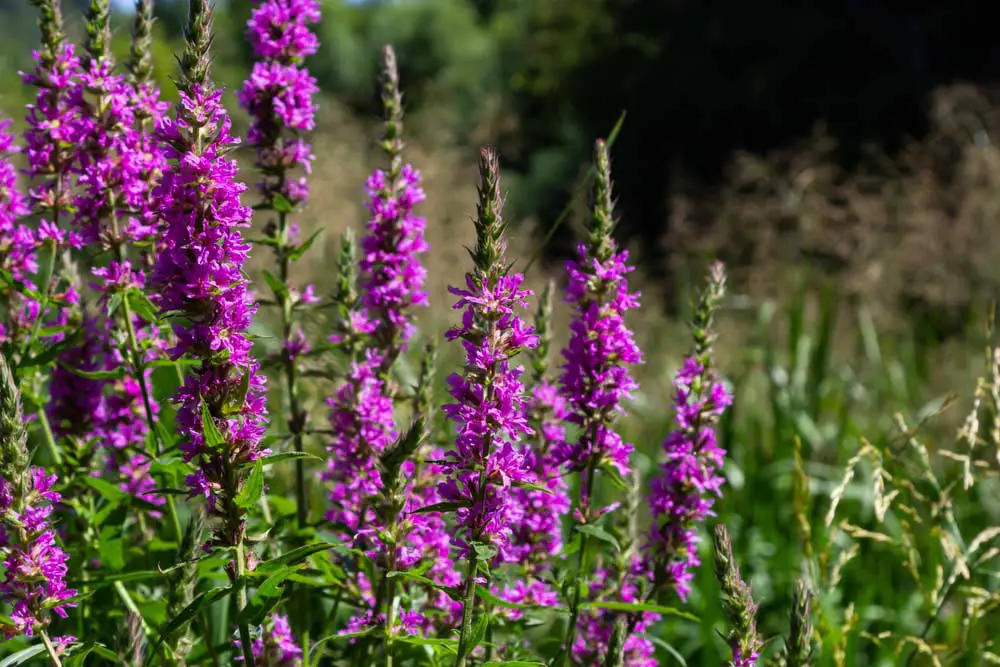
Wildlife Habitat Disruption
Purple Loosestrife (Lythrum salicaria) may look pretty with its tall spikes of purple flowers, but it can cause significant harm to your garden and local ecosystems. It spreads quickly, outcompeting native plants and eventually forming dense stands. As a result, it can disrupt the habitat of various wildlife, particularly those that rely on wetlands and native plants for food and shelter.
In some parts of the United States and Canada, Purple Loosestrife has been known to degrade vital habitats for waterfowl, amphibians, and other species that depend on diverse wetland ecosystems. While you might be tempted to enjoy the colorful blossoms, it’s important to remember the harm they can cause.
Loss of Plant Diversity
In addition to disrupting wildlife habitats, Purple Loosestrife can also lead to loss of plant diversity in your garden and surrounding areas. This invasive species has a competitive advantage, thanks to its rapid growth and prolific seed production. It can ultimately displace native plants and significantly reduce plant diversity, causing problems for other wildlife and the overall community.
Here are a few reasons why Purple Loosestrife can be so problematic:
- Rapid reproduction: A single plant can produce up to 2.7 million seeds, which can spread by wind, water, or animals.
- Hardiness: It’s highly resistant to various environmental stressors, making it tough to eradicate completely.
- Aggressive roots: Purple Loosestrife has a dense root system that can quickly invade new areas, thereby outcompeting native plants.
Given these factors, it’s clear that Purple Loosestrife poses a serious threat to your garden’s biodiversity and the broader environment. To protect both native plants and wildlife, it’s best to avoid adding Purple Loosestrife to your garden and opt for more environmentally-friendly alternatives instead.
Giant Hogweed
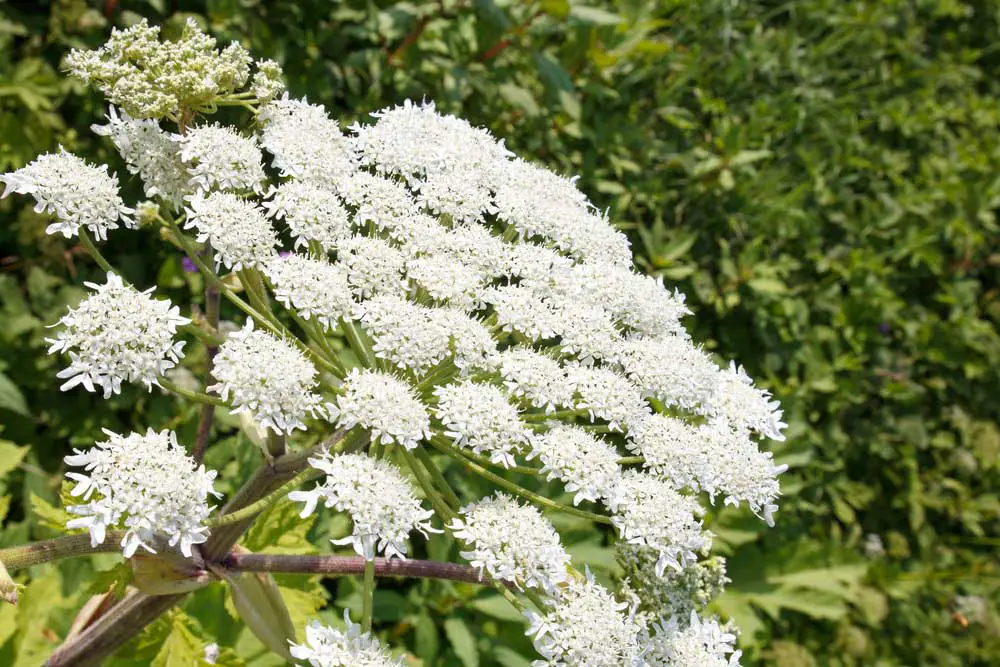
Harmful to Human Health
Giant Hogweed (Heracleum mantegazzianum) is a plant you should definitely avoid planting in your garden. Not only does it grow aggressively, but it also poses significant health risks. If the sap comes into contact with your skin and is exposed to sunlight, it can cause phytophotodermatitis. This reaction results in painful blisters, rashes, and even long-lasting scars. Be cautious around this plant, as just brushing against the leaves or stem can break tiny hairs containing the sap.
If you happen to come into contact with Giant Hogweed sap, it’s important to:
- Wash the affected area immediately with soap and cold water
- Stay away from sunlight for at least 48 hours
- Seek medical help if necessary
Demanding Eradication
Due to its invasive nature and the harm it can cause to human health, many localities have initiated eradication practices to control and eliminate Giant Hogweed. If you find this plant on your property, it’s your responsibility to take action.
Here are some steps you can take:
- Report: Inform your local authorities or conservation agencies, who often have professionals trained in Giant Hogweed removal.
- Prevent seeding: Cut off flower heads before the plant has a chance to produce seeds. This will prevent further growth.
- Physical removal: Wear protective clothing (gloves, long sleeves, long pants, and face covering) before attempting to remove the plants. Carefully dig up and dispose of the plant, making sure to remove as much of the root system as possible.
While it may sound like a daunting task, taking these measures to remove Giant Hogweed from your garden will help protect you, your loved ones, and the environment.
Japanese Knotweed
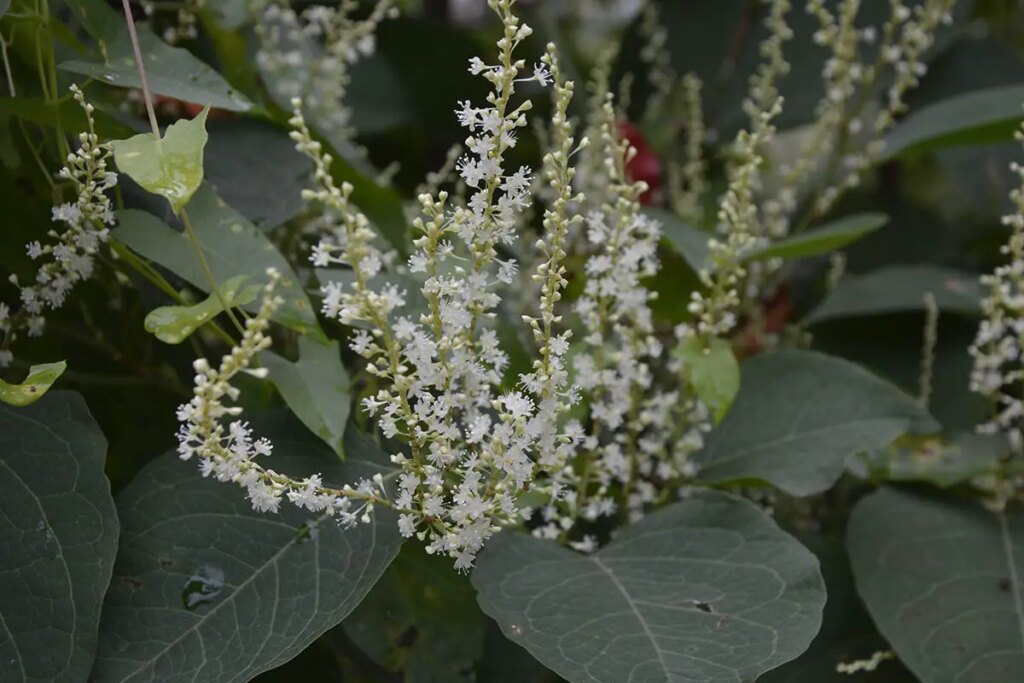
Aggressive Growth
Japanese Knotweed (Fallopia japonica) is a plant you’ll want to avoid in your garden due to its incredibly aggressive growth habits. This invasive plant species can quickly take over your garden and choke out other plants, making it difficult for other species to thrive. Its rapid growth rate of around 10 cm per day during the peak growing season makes it extremely hard to control.
Some key points about Japanese Knotweed’s growth include:
- Extremely invasive and aggressive
- Grows rapidly (up to 10 cm per day)
- Chokes out native plants and disrupts ecosystems
Structural Damage
Another reason to avoid planting Japanese Knotweed in your garden is the potential for significant structural damage. The plant’s roots, known as rhizomes, can spread up to 7 meters horizontally and penetrate deep into the ground. These powerful roots can damage your home’s foundation, walls, and even penetrate into pipes and drains.
Potential damages caused by Japanese Knotweed:
- Burrowing roots cause cracks in walls and foundations
- Damage to pipes and drains
- Increases risk of erosion and landslides
To keep your garden and property safe from Japanese Knotweed, be vigilant about identifying and removing any traces of the plant. If you spot this unwelcome guest in your garden, make sure to take immediate action to prevent its spread.
Barberry
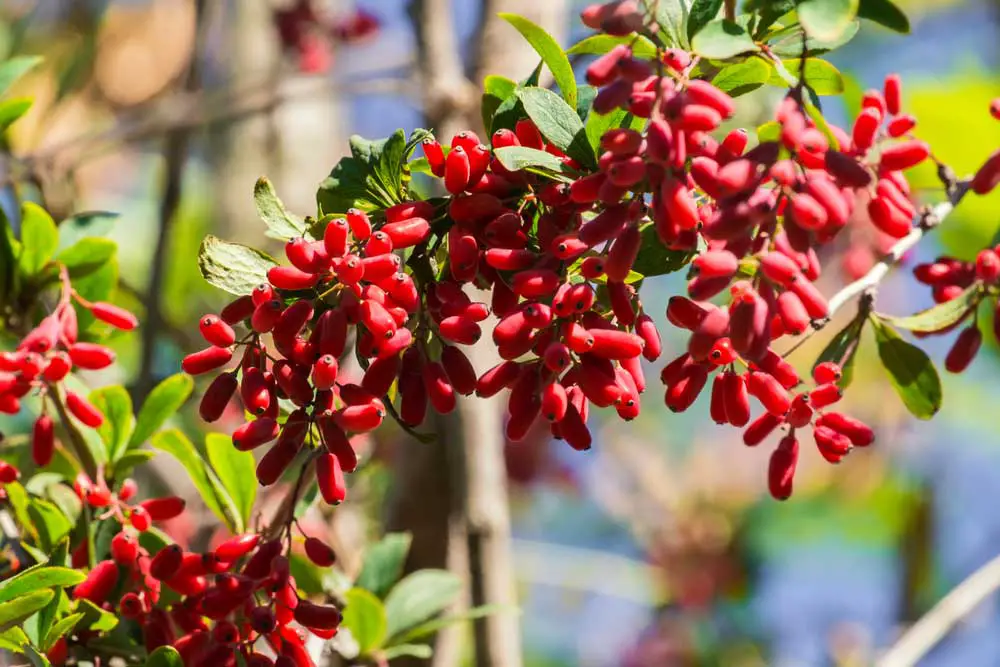
Barberry is a popular choice for many gardeners due to its appealing appearance and low maintenance. However, experts advise against planting barberry in your garden. It poses some significant risks that you should be aware of before making a decision.
First off, barberry is an invasive species. Although it may look beautiful in your garden, this plant can easily spread and take over the natural surrounding landscape, pushing out native plants in the process. Invasive species like barberry are known to negatively impact biodiversity, resulting in a less healthy ecosystem overall.
Another reason to steer clear of barberry is its attractiveness to ticks. These tiny arachnids are not only a nuisance, but they can also transmit diseases such as Lyme disease, which can have serious health consequences. By having barberry in your garden, you could unintentionally be creating a habitat for ticks, making your outdoor space less enjoyable and safe.
Lastly, the thorns on barberry plants can be hazardous. Whether you’re gardening, playing with your kids, or just walking around, these sharp thorns can easily cause injury. In addition, they can make pruning and maintenance more difficult and painful as well.
So, when planning your garden, it’s better to choose alternative plants that can provide similar benefits without the risks associated with barberry. There are plenty of other beautiful and low-maintenance options that will not harm the environment or pose dangers to your health and safety.
Mexican Feather Grass
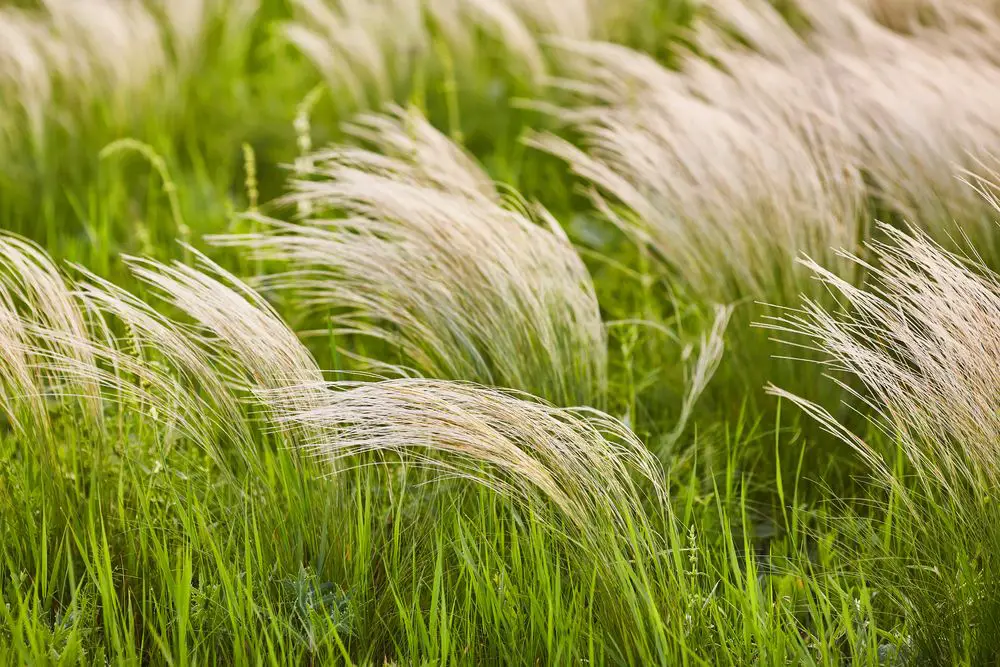
Mexican Feather Grass (Stipa tenuissima) is an eye-catching ornamental grass in many gardens. Its delicate, feathery plumes create an attractive, wispy appearance. However, experts advise against planting it in your garden for a few reasons.
Firstly, Mexican Feather Grass is a highly invasive species. Its seeds spread quickly and easily, making it difficult to contain. Once established, the grass can outcompete native plants, potentially leading to a loss of biodiversity in your garden and the surrounding ecosystem. By avoiding this plant, you’re doing your part to protect your local flora.
Another reason to steer clear of Mexican Feather Grass is its fire risk. This plant dries out in the summer months, presenting an increased risk of wildfires, especially in drought-prone areas. If you live in an region prone to fires, it’s essential to consider the potential danger that this grass could bring to your home and surrounding properties.
Lastly, Mexican Feather Grass can be a maintenance headache. Due to its rapid growth and invasive tendencies, you may find yourself continually pulling stray seedlings from your garden beds and even your lawn. In addition, the dried grass blades are sharp and can cause skin irritation or injury if not handled with care.
Instead of Mexican Feather Grass, consider planting native grasses that are better suited to your local ecosystem and pose less of a threat to its biodiversity. By doing so, you can still enjoy a beautiful, low-maintenance garden while being a responsible gardener.
Miscanthus

You might have seen Miscanthus, also known as Chinese Silver Grass, in various landscapes for its unique look and low maintenance requirements. However, growing Miscanthus in your garden might not be the best idea for a few reasons.
First, Miscanthus is considered invasive in some regions and can quickly spread, affecting native plant species by competing for resources and space. It is known for its ability to self-seed, which can make it challenging to control its growth.
Second, Miscanthus can become a fire hazard in dry conditions as it becomes highly flammable when dormant. Areas prone to wildfires should avoid planting this ornamental grass in their gardens for safety reasons.
In conclusion, even though Miscanthus adds an attractive element to landscapes, it’s best to avoid planting it in your garden. Instead, consider other ornamental grasses like Blue Fescue or Fountain Grass that offer a similar aesthetic without the negative impacts.
Preventing Growth of Unwanted Plants
To keep your garden healthy and beautiful, it’s important to prevent the growth of unwanted plants. By learning some easy-to-follow steps, you can maintain a beautiful and thriving garden. Here are some tips to get started.
Start with healthy soil. Good soil is the foundation of a successful garden. By ensuring your garden soil is nutrient-rich and well-draining, you’ll make it harder for unwanted plants to take root. Enhance your soil with organic matter like compost or well-rotted manure. This will not only improve the soil structure but also provide essential nutrients to your desired plants.
Choose the right plants for your garden. Before you start planting, research which plants are appropriate for your climate and their compatibility with other species. By selecting plants that are well-suited to your garden’s conditions, you’ll create a stronger, healthier ecosystem and make it tougher for invasive plants to gain a foothold.
Regularly monitor your garden. Keep an eye on your garden and watch for signs of invasive plants. Many invasive and unwanted plants can spread quickly if not dealt with early. By catching these plants in their infant stages, you can eliminate them before they become a serious problem.
Mulch your garden beds. A layer of mulch can make it difficult for weed seeds to germinate and unwanted plants to take root. Spread a 2-3 inch layer of organic mulch (like wood chips or shredded leaves) around your plants. This will also help retain moisture and regulate the soil temperature.
Manage your planting schedules. Stagger your planting schedule to ensure all your garden beds are full throughout the growing season. A full, thriving garden will compete for space, nutrients, and water with potential invaders, making it harder for unwanted plants to grow.
Remember, the key to preventing unwanted plants in your garden is a proactive approach. By taking a few simple steps to maintain a healthy garden, you can avoid these unwelcome visitors and enjoy a beautiful, thriving space.





